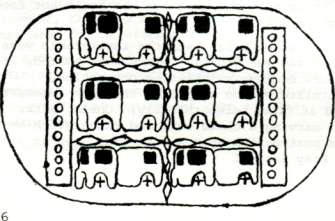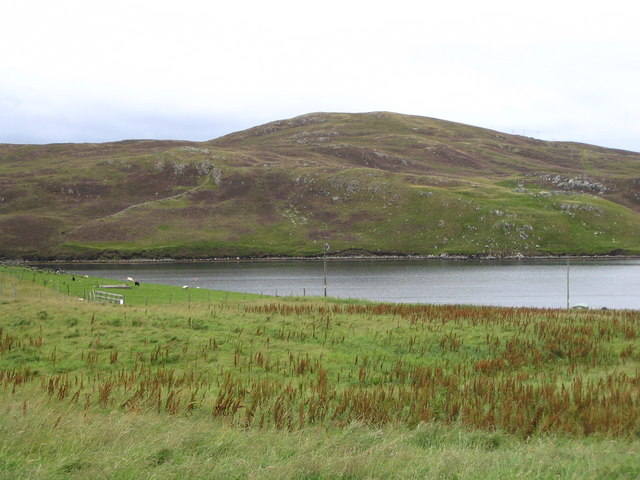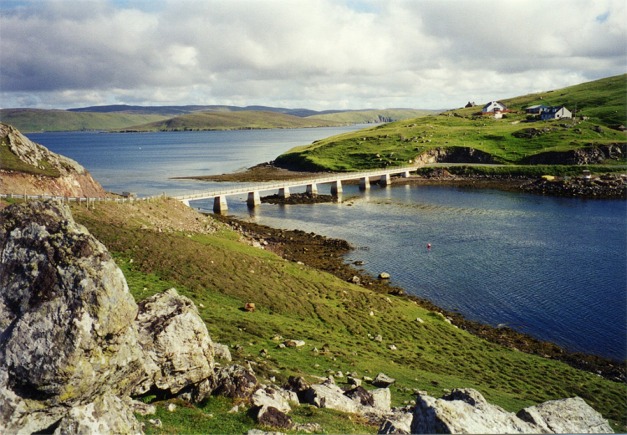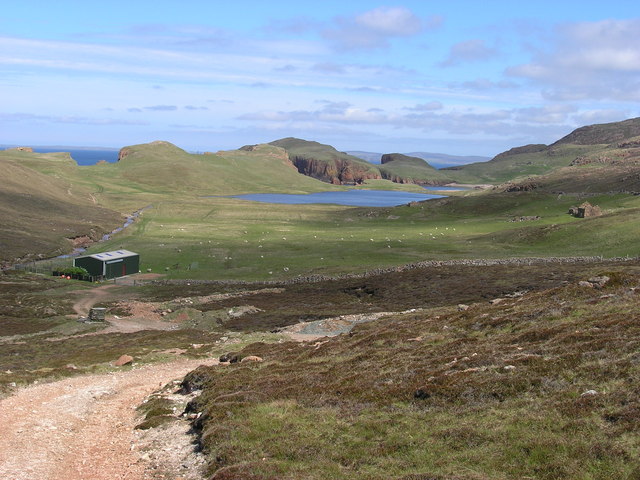![]()
![]()
Muckle Roe 1972
MUCKLE ROE (SHETLAND)EXPEDITION 1972
Ray Winter (leader)
Members: Tim Bell, Paul Birchenough, Graeme Cottam, Mike Griffin, Chris Hix, Graham Holdup, Keith Howard, Rory Post, George Stanley, Mark Williams,
LEADER'S REPORT
'Dispecta est Thule' — so Tacitus claims the Roman legions to have espied the northern limits of their conquest. We saw it from the decks of the 'ST.GLAIR' as she nosed her way into a berth of Lerwick harbour.
An expedition of only eleven differed from the usual S.H.S. kind. For one thing, your turn at cooking came round sooner; for another, the weight of stores per head may have been relatively lighter. This did not strike us as so when it came to man-handling them!
Strictly speaking, Muckle Roe is not an island, being connected to the mainland by a bridge. This served to tantalise us with the availability of Brae's flesh-pots, a public telephone, public lavatory, and the shop. This last was our main supplier, but the Dock Strike had severely limited the stock, a situation which grew worse, rather than better, as time went on.
The site in the pleasant weather of our arrival seemed ideal. Our tents were soon grouped around the caravan which we had hired with the site. It turned out to be a hotel, providing warmth and light to us all, and to those who could not face sleeping in a bivvie', a bunk.
The cliff scenery was spectacular, and the innumerable voes provided rock-pools and sea-weedy bays. Birds were varied, if not plentiful; seashore ecology a full-time occupation. Graeme and Graham administered the camp from the dark recesses of their "office”, and at times telepathically; Chris, after much joinery, took to carving a chess set, and fingers Mike supervised a gruesome post-mortem upon a cormorant, and we all wished the worst for Fray Bentos!
Within a fortnight the island had yielded up all its charms but for the stirring sunsets, scent of heather and the low-key rumbling of the sea in subterranean caves. Thus, the Morris Traveller came into its own. Travel it did, with parties to Flugga Mugga and the most northerly post-office in the British Isles, others to the extreme south, to Sumburgh Head; to the gannets of Unst, to the striking evidence of a thousand years of continuous settlement at Jarlshof. Keith, Tim and Rory made the journey to Foula, while others scoured the Mainland for cairns, cists and brochs. This led to a call at Vementry, an island opposite Muckle Roe, from which one can see the raw, red cliffs which give it its name; from where, too, the naval guns still point mutely into St Magnus Bay. The islanders took us into their lives with amazing grace! Invited to Barbeques, Dances, we were always made welcome. Our attempt to beat their invincible footballers failed in spite of reinforcements — a French Moroccan and some lady spectators! It was good to be able to be hosts to some twenty of the islanders on the last night and to put a 'spread' before them which a guest described as "a feast a good housewife would be proud of. ' We left with the spirit of the place drawing us back. Another delay was the loading of sheep onto the boat — the first cargo of animals for weeks. Our departure at 10 pm. put a severe restriction on certain social amenities aboard, which did not become available until we sailed, and were savagely withdrawn without extension. Perhaps the doctor was deprived in other ways. We know he had enough seasickness pills for an army, but on neither journey was there an excuse to use them. It is appropriate here to draw attention to the unhappy fact that the 'oil boom' is already changing the face of Shetland. One islander put five years between them and an unrecognisable clutter of derricks, drills and Dodge motorcars, bringing with them so much that is to spoil the islands and their people.
RAY WINTER

NOTE: The ‘glyph’ was found on the Muckle Roe campsite and is thought to represent the Ark, or caravan, of a Neolithic SHS party!

Gossaford hill across Roe Sound
© Copyright Ken Craig |

Bridge over Roe Sound to Muckle Roe island
© Copyright Tom Pennington |

Town Loch and Sandhill Ruin 2005. Sandhill croft is the ruin to the right of the picture. Surveyed by the expedition, see 1972 report part II p 47.
© Copyright RIJones |